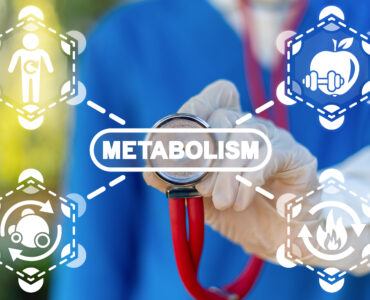Cardiovascular Disease: The Number One Killer
If you are in middle age or later, you may have already experienced some signs of aging: your joints may ache occasionally, you may not remember names as easily as you used t o, or you have a hard time remembering where you left your keys. Also, you may not sleep as well as you used to.
o, or you have a hard time remembering where you left your keys. Also, you may not sleep as well as you used to.
Chronic conditions that begin to affect women in middle age are due, in part, to declining levels of estrogen, which helps maintain tissues in the body’s reproductive organs, as well as the breasts, brain, bones, bladder, and the cardiovascular system. Genetic makeup is also complicit, as are the cumulative effects of normal aging, environmental forces, and lifestyle choices. Visit the CDC death statistics illustrate how death’s leading causes for women change with age.
This article will give you an idea of the factors that are likely to put you at higher risk for various conditions for years to come. You will also find all the steps you can take to protect yourself, specifically against cardiovascular disease CVD). Fortunately, many of the measures that I share here help reduce risks in all areas;
What About Cardiovascular Disease?
Cardiovascular disease takes more lives than all cancers combined in the United States. Additionally, heart disease invades women more quietly than men, with symptoms beginning about a decade later. They also manifest themselves differently than in men.
The name “cardiovascular” refers to affecting the vessels that surround the heart and carry oxygenated blood to the heart muscle. This includes the major coronary arteries, which lie on the heart’s surface, and a network of smaller and smaller vessels that branch off from the coronary arteries to saturate the heart tissue with blood.
How Cardiovascular Disease Occurs?
The problem begins when excess cholesterol, carried through the bloodstream in protein-coated particles known as LDL or “bad” cholesterol, builds upon the arteries’ walls. In a perfect world, you would have enough HDL, or “good” cholesterol particles, to absorb the excess and carry it to the liver for elimination. But many women do not have enough HDL. The immune system sees the cholesterol that remains on the vessel walls as an invader and launches an inflammatory attack.
White blood cells eat up cholesterol, fill with fat, and get stuck in the vessels’ walls, where many of them die, spilling their contents. To isolate the damage, the immune system wraps the area in a fibrous layer, forming an atherosclerotic plaque. But because cholesterol has not been removed, the inflammatory process persists.
This reduces blood flow to the heart, causing chest pain (angina). It can also cause heart attacks by building plaque inside a coronary artery until it blocks blood flow completely, depriving the heart muscle of oxygen and nutrients. Or, more often, the unstable plate can rupture under pressure. A blood clot forms over the ruptured plaque and blocks the artery.
More About CVD
However, it turns out that there is a third way to develop cardiovascular disease and heart attacks. It involves a condition known as coronary microvascular disease and, although it can affect men, it is more common in women, especially younger women (average age 49).
In microvascular disease, the problem does not start in the major coronary arteries but rather in the smaller arteries that branch off those larger vessels. Instead of developing plaques that burrow into the vessel wall or protrude into the open passage through which blood flows, the smaller vessels undergo inflammation that narrows and hardens them. They cannot dilate to increase blood flow in response to the body’s demands, so the heart does not get all the blood it needs. Also, damage to these causes the small vessels’ inner walls to spasm that further reduces blood flow to the heart, causing symptoms such as fatigue, diffuse chest discomfort, shortness of breath, and sometimes heart attacks.
Unfortunately, there are no good tests for microvascular disease, as standard tests were designed to detect large vessel problems. People with chest pain symptoms first undergo noninvasive stress tests to determine if the heart is getting enough blood as oxygen demand increases.
If you recognize any of these symptoms, you should contact your GP for the necessary tests.
The 13 Factors That Lead to CVD
Now let’s talk about 13 factors that may lead to cardiovascular disease.
The first is age. After 55, a woman’s chance of having a heart attack begins to increase steadily. As we have seen in previous articles around this age, most women have gone through menopause. The protective effects of estrogen, which increases HDL and reduces LDL cholesterol levels, are wearing off. In fact, postmenopausal women are two to three times more likely to develop heart disease than women of the same age who are still menstruating.
Family history. If your mother or a mother’s sister was diagnosed with coronary artery disease before age 65, or if your father or brother had it before age 55, there is a high risk that you may develop CVD.
Ethnicity. African Americans, Mexican Americans, Native Americans, and native Hawaiians are all more likely than people of European descent to develop heart disease. There is much to investigate yet to discern, what portion of the risk is due to genetic origin, and what portion is due to cultural practices.
Smoking. This is one of the leading causes of death in the United States, and among those who died from this cause, at least one in three were from CVD. And if you don’t smoke, but you live with one or more people who do, you have a 1 in four chance of developing CVD. By then, evil is irreversible. One year after quitting, former smokers have cut their risk in half.
Fifteen years later, they have erased almost everything.
Diabetes. An adult diagnosed with diabetes has the same high cardiac risk as someone who has already had a heart attack.
The impaired cholesterol profile, as we discussed previously. However, notice that the more HDL in your bloodstream,
the lower your chances of having a heart attack.
High blood pressure (hypertension). High blood pressure damages the cells lining arteries, prompting the immune system to mount an inflammatory response that contributes to atherosclerotic plaques.
Metabolic syndrome. This is a topic that needs a space apart to discuss it. In further articles will address metabolic syndrome. Check these indicators as a pre bonus. If you say yes to three or more, then you rate for metabolic syndrome:
- waist size greater than 35 inches
- blood pressure that is 130/85 mm Hg or higher
- HDL cholesterol that is less than 50 mg / dL
- triglyceride level that is 150 mg / dL or higher
- fasting blood glucose level of 110 mg / dL or higher.
If you qualify for metabolic syndrome, it is time to call your healthcare provider to begin to take action as soon as better. Visit Dr. Gala Health Coaching to learn about their holistic management of metabolic syndrome. Hundreds of women have improved their health by addressing this issue.
Inflammation. inflammation is a major player in atherosclerosis
Anemia. A condition in which a person does not have enough red blood cells. These cells carry oxygen to your tissues, so anemia can leave you feeling tired or weak as it reduces the heart muscle’s oxygen supply.
Overweight and obesity. Not only is obesity closely linked to high blood pressure, unfavorable cholesterol levels, lack of exercise, and diabetes, but it also increases your risk for heart disease independent of these other conditions. Women with excessive upper-body fat (the “apple” shape) are at a higher risk to the heart than lower-body obesity (the “pear” shape).
Sedentary lifestyle. The absence of any leisure physical activity roughly doubles coronary artery disease risk, making it as risky as smoking, high cholesterol, or high blood pressure.
Psychological factors. Your mental health can also affect your heart disease risk in several ways: stress, depression, hostility and anger, and social isolation. All these mental and behavioral issues play a crucial role in developing CVD and other chronic conditions.
How To Achieve A Healthy Heart?
The connection between a nutritious diet and a healthy heart just became even clearer. A recent study by the University of Washington found that almost half of cardiovascular disease deaths can be prevented by changing what you put on your plate.
To make those choices easier, researchers also identified several of the leading risk factors and measured how much they contribute to the likelihood of heart conditions and stroke.
It’s a big deal when you consider that cardiovascular disease (CVD) is the leading cause of death in the US and worldwide. Find out which dietary changes will have the biggest impact on helping you to lead a longer and more active life.
13 Tips To A Healthy Heart
Top Dietary Factors for a Healthy Heart
1. Go nuts. The single most effective step you can take is eating more nuts and seeds. They reduce 11.6% of the risk of CVD death.
2. Eat more vegetables. Vegetables were close behind. Aim for at least 7 servings a day of fresh or frozen vegetables and fruits.
3. Choose whole grains. Enjoy whole-grain bread, oatmeal, and brown rice. They have more protein and fiber than refined grains. Plus, they’re more filling, so you’ll probably feel satisfied with fewer calories.
4. Limit salt. Excess sodium increases blood pressure, and the symptoms are often invisible. Substitute lemon, garlic, and other flavorful herbs and spices.
5. Eliminate trans-fatty acids. Trans-fats raise unhealthy LDL cholesterol and lower healthy HDL cholesterol. You can avoid them by eating fewer processed foods, especially those that list partially hydrogenated oils in their ingredients.
Habit for a Healthy Heart
1. Try a Mediterranean diet. Following a Mediterranean diet guarantees heart-healthy choices. This diet consists of mostly plant-based foods, along with fish and moderate amounts of red wine.
2. Increase omega-3s. However you eat, consider adding at least 2 servings of fish a week to your diet, especially fatty types like salmon and tuna. If you’re a vegetarian, rely on flax seeds, walnuts, and beans for your omega-3 fatty acids.
3. Quit smoking. Talk with your doctor if you’re having trouble giving up tobacco on your own. Your physician can help you understand your options, including nicotine-replacement devices and support programs.
4. Use alcohol in moderation. Small quantities of alcohol may actually be good for your heart. That means up to 2 cocktails a day for men and one for women.
5. Turn off the TV. Couch potatoes are at higher risk of heart disease, strokes, and cancer. Limit your daily viewing to 2 hours or less.
6. Exercise regularly. Physical activity makes your muscles stronger, and that includes your heart. Enjoy aerobic exercise, stretching, and resistance training. Design workouts that you love and will want to stick with.
7. Lose weight. Being overweight puts an extra strain on your heart, especially if those excess pounds are mostly around your waist. Slim down by eating less and exercising more. Ask your family and friends for support. They may even want to join you. Losing just 10% of your body weight can greatly enhance your cardiovascular wellbeing.
8. Manage stress. How you deal with stress can also take a toll on your heart if you reach for junk foods, beer, and cigarettes. Learn to relax more safely with meditation, stimulating hobbies, and gentle music.
Conclusion
CVD and the toll it takes in women life is enough reason to decide on your health. Cutting your risk of cardiovascular conditions in half is one more worthy reason for eating a balanced diet and making other simple lifestyle changes. Take care of your heart by consuming more nuts, vegetables, and whole grains and cutting back on empty calories.







This article is so important and educative. It’s very important for cardiovascular system to be in good conditions for good health and well body-being. It’s so unfortunate that with aging, the levels of estrogen which seem to decline at middle or later age in women. So it’s very important to take into consideration how we handle our bodies in order to stay as healthy as possible.
Thank you, Kokontala. Yes, the risk for cardiovascular disease increases with age, and that applies for both men and women. It is as important to maintain a lifestyle that is commensurate with healthy living.
Hello Dr. Angela Gala,
Thank you for dropping a very interesting piece. I really enjoyed reading through every piece of it. Health is wealth so evryone should never forget putting their health in consideration. To matter how good making money is, you will never enjoy the money well when you don’t have good health. This is why I always recommend medical articles like this. One always have to be take all necessary precautions and avoid whatever needs to avoid when talking on cardiovascular diseases. I have bookmarked this already and I am going to share to spread the awareness. Thanks once again doctor.
Hey Miraclex! It makes me happy to know that you join this pro-health movement by spreading the word out there and increasing awareness in our communities. I appreciate it very much that you keep doing this. My promise is to bring the best service to these communities and as much information and education. Thank you!